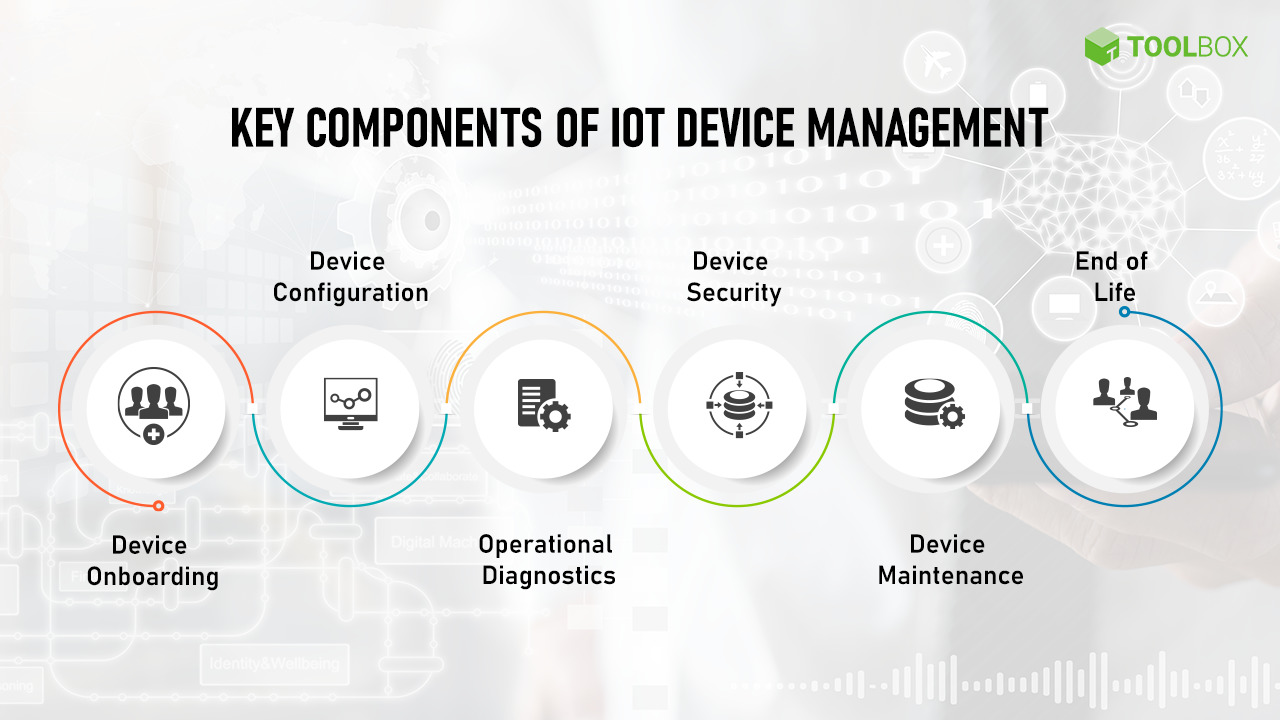The Internet of Things (IoT) is rapidly expanding, with billions of connected devices around the world. With so many smart devices and sensors in use, device management has become an essential part of IoT operations. But what is device management in IoT?
Device management in IoT involves monitoring and managing all connected devices on a network to ensure they are secure, operational, and up-to-date at all times. By using advanced software tools such as over-the-air updates or remote diagnostics systems, businesses can easily keep track of their entire fleet of IoT devices while also ensuring data security across the board.
In this article, we will answer: what is device management in IoT? How can organizations implement it for maximum efficiency?
Table of Contents
What is Device Management in IoT?
What is device management in IoT? It is the process of managing and monitoring connected devices on an Internet of Things (IoT) network. It involves a range of activities, from setting up the infrastructure to remotely managing and controlling individual devices.
IoT device management work helps organizations maximize their investment in IoT technology by ensuring that all connected devices are secure, reliable, and performing optimally.
Definition of IoT Device Management
IoT device management comprises processes used to monitor, configure, update, maintain, troubleshoot, and repair internet-connected physical objects or “things” such as sensors or other embedded systems. The goal is to ensure that these things remain operational over time so they can continue providing useful data for applications such as predictive maintenance or asset tracking.

(Source)
Benefits of Effective IoT Device Management
The advantages of device management are numerous, from improved efficiency through automated processes to increased security with access control. Cost savings can be achieved by reducing manual interventions and scalability is enhanced with remote updates.
Reliability is further improved with regular software updates, leading to a better customer experience due to faster response times. Finally, resources are used more efficiently thanks to optimized performance.
Device management in IoT is an essential tool for organizations to maintain and monitor their devices, ensuring that they are secure, up-to-date, and operating efficiently. In the next section, we will discuss different types of device management in IoT.
Types of Device Management in IoT
What is device management in IoT? Device management is an essential component of any Internet of Things (IoT) system. It involves the monitoring, controlling, and updating of connected devices to ensure they are secure and functioning properly.
There are several types of device management available for IoT systems, each with its own set of benefits and challenges.
Over-the-Air (OTA) Updates
Over-the-Air (OTA) updates allow for remote software updates to be pushed out over a wireless network connection without requiring physical access to the device itself. This can save time and money by eliminating the need for manual updates or onsite visits from technicians.
OTA also allows for quick bug fixes or feature enhancements that can be deployed in real-time across multiple devices simultaneously. However, it is important to ensure that all OTA update processes are secure as malicious actors could potentially exploit them if not properly protected against unauthorized access or manipulation.
Configuration Management
Configuration management enables users to configure settings remotely via a web interface or mobile app instead of having to manually adjust settings on each device separately. This makes it easier to manage large fleets of connected devices at once while ensuring consistency across different models and versions within the same product line.
Additionally, configuration management tools often provide analytics capabilities that can help identify issues before they become major problems such as low battery life or poor performance due to incorrect settings being applied during setup procedures.
Device management in IoT is a critical component for the success of any connected system, as it enables secure and efficient device maintenance.
How to Implement Device Management in IoT
IoT device management solutions enable businesses to remotely manage their IoT deployments, ensuring that they are secure and up-to-date with the latest software versions. Implementing device management in IoT requires establishing connectivity between the devices, setting up a secure infrastructure for communication, and managing devices remotely.
Establishing Connectivity
The first step towards implementing device management in IoT is to establish connectivity between all the connected devices. This can be done using various technologies such as Wi-Fi or Bluetooth Low Energy (BLE).
Once these connections have been established, it will allow for data transmission between different nodes on the network. Additionally, this connection also allows for remote access which can be used to monitor and control connected devices from afar.
Setting Up the Infrastructure
After establishing connectivity between all of your connected devices you need to set up a secure infrastructure for communication among them. This includes creating a private local area network (LAN) or wide area network (WAN), configuring firewalls, and other security measures such as encryption protocols like TLS/SSL or IPSec VPNs.
These measures help protect against malicious actors attempting to gain unauthorized access to your system by providing an extra layer of security around sensitive data transmissions.
Managing Remotely
Once connectivity has been established and a secure infrastructure for communication is in place, it’s time to begin managing connected devices remotely. This can be done using Over-the-Air (OTA) updates or configuration management tools such as Ansible or Puppet Enterprise Edition.
OTA updates allow users to quickly push out new software versions while configuration management tools provide more granular control over how each device is configured at any given time. This gives administrators the flexibility to make changes across multiple systems simultaneously without having to manually update each one individually.
It is also essential that regular security audits are conducted so that any potential vulnerabilities in these systems can be identified before they become exploited by malicious actors.
By following best practices for device management in IoT, such as secure network architecture, automated monitoring and alerts, and regular software updates, organizations can ensure that their devices are properly managed and securely connected.
Best Practices for Device Management in IoT
Now that we have answered “what is device management in IoT,” let’s look at how to implement it effectively. To ensure successful device management in IoT systems, it’s important to understand the best practices for implementing it.
Secure Network Architecture
A secure network architecture is essential for proper device management in IoT systems. This includes using strong encryption protocols such as TLS/SSL or IPSec to protect data from unauthorized access and malicious attacks.
Additionally, all devices should be configured with unique passwords that are regularly changed or updated to prevent brute-force attacks on the system. Firewalls should also be used to restrict access from outside sources and create a secure perimeter around the network.
Automated Monitoring and Alerts
Automated monitoring can help identify potential issues before they become major problems by providing real-time alerts when something goes wrong with a device or its connection status changes unexpectedly. This allows administrators to quickly respond to any issues that arise while keeping users informed about what’s happening with their devices at all times.
Regular Software Updates
Regular software updates are necessary for maintaining optimal performance levels in an IoT system over time as new threats emerge and technology evolves rapidly in this space. Administrators should use automated patching tools whenever possible so that all connected devices receive the latest security patches.
By following these best practices for device management in IoT systems, organizations can ensure their networks remain secure while ensuring optimal performance levels across their entire infrastructure. This will help to protect the system from potential threats and keep users informed about what is happening with their devices at all times.
Device management is essential for IoT networks, and following best practices such as secure network architecture, automated monitoring and alerts, and regular software updates can help ensure the security of your devices.
Conclusion
What is device management in IoT? Device management helps to ensure that devices are secure and functioning properly, while also providing insights into how they are being used.
By following best practices for device management in IoT such as setting up authentication protocols, monitoring device performance, and regularly updating firmware, organizations can create a secure and reliable environment for their connected devices. With the right approach to device management in IoT, businesses can maximize the potential of their Internet-of-Things solutions and stay ahead of the competition.
Device management in IoT refers to monitoring, controlling, and configuring connected devices from one central location. Implementing an effective device management solution can help ensure that all components are functioning optimally and securely, as well as provide real-time visibility into their performance.
With the right solutions in place, organizations can reduce costs associated with manual maintenance tasks while improving overall efficiency for better business outcomes. Invest now in reliable device management solutions to optimize your IoT systems today!





